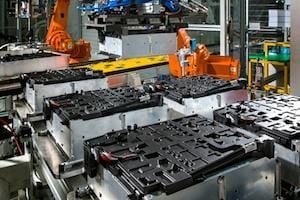- Home
- About us
- Products
- Dealer Enquiry
- Blog
- Contact Us
- Home
- About us
- Products
- Dealer Enquiry
- Contact Us
- 044 -2486 1994
- +91 99623 98222
- sales@nantech.in
- REQUEST A QUOTE
A battery is an essential device that we make use of in our daily lives. Batteries are used as an emergency power requirement. You can run various electrical appliances; electrical vehicles etc. utilizing the power generated using batteries. There are multiple types of batteries available in the market based on the purpose and application you use. It is essential that you know the manufacturing process of a battery so that you can choose the right type of battery for your requirements. There are various battery outlets in and around Chennai that offer quality batteries.
Applications that make use of batteries are automobiles, defense, railways, telecommunication, power stations, etc. They are mainly used in emergency situations when there is a power failure. The article below gives an overview of the manufacture of batteries.
The standard type of battery used for various applications is lead-acid batteries. These batteries are mainly used for automobile applications and also for installing UPS at home. They are recyclable and can reduce the impact on the environment. You can purchase suitable lead-acid batteries from the best exide inverter battery dealers in Chennai. Here you can learn about the components used for the manufacture of a lead-acid battery.
 The tubular lead acid batteries contain two different lead-based plates. These plates are immersed in an electrolyte solution. Sulfuric acid is used as an electrolyte in a majority of lead-acid batteries. The lead-based plates are differentiated as a negative plate which is made up of lead and a positive plate which is made up of lead oxide. A pair of lead-based plates can generate 2V of power. Thus for creating 12V of energy, you need six pairs of lead plates. These plates are also referred to as anode and cathode plants. A separator is used to avoid the contact of the positive and negative plates. The battery comes with a case that holds the components of the lead-acid battery. There are cell connectors and terminals for the electrical connections inside the battery.
The tubular lead acid batteries contain two different lead-based plates. These plates are immersed in an electrolyte solution. Sulfuric acid is used as an electrolyte in a majority of lead-acid batteries. The lead-based plates are differentiated as a negative plate which is made up of lead and a positive plate which is made up of lead oxide. A pair of lead-based plates can generate 2V of power. Thus for creating 12V of energy, you need six pairs of lead plates. These plates are also referred to as anode and cathode plants. A separator is used to avoid the contact of the positive and negative plates. The battery comes with a case that holds the components of the lead-acid battery. There are cell connectors and terminals for the electrical connections inside the battery.
The following are the steps followed in the manufacture of batteries.
Now let's understand each process in detail below.
The above are the things to know about the manufacturing process of lead-acid batteries. You can then find various ranges and models of lead-acid batteries across multiple battery outlets in Chennai. You can use this type of battery for the UPS installed in your house.